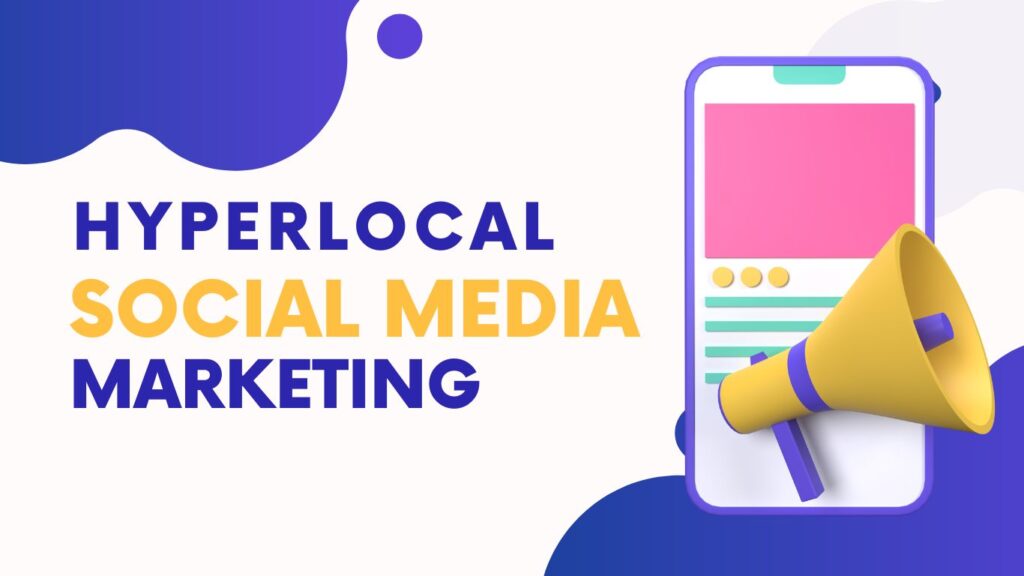In today’s fast-paced digital landscape, businesses are constantly seeking innovative ways to connect with their audience. One such strategy that has gained immense popularity is Hyperlocal Social Media Marketing. This unique approach goes beyond traditional social media tactics, targeting specific geographic locations to create a more personalized and impactful connection with users.
Table of Contents
What is Social Media Marketing
In the dynamic realm of digital marketing, Social Media Marketing (SMM) has emerged as a powerhouse, revolutionizing how businesses engage with their audience. This strategy leverages social media platforms to build brand awareness, foster community, and drive traffic, ultimately leading to increased conversions. Let’s dive into the key components and strategies that make Social Media Marketing an indispensable tool in the modern business landscape.
Understanding Social Media Marketing

Defining Social Media Marketing: At its core, SMM involves the use of social media platforms such as Facebook, Instagram, Twitter, LinkedIn, and others to connect with the target audience. The goal is not only to promote products or services but to build a meaningful relationship with customers.
Importance in Today’s Digital Landscape: With billions of users actively engaging on various platforms, social media has become a central hub for communication, information sharing, and decision-making. Businesses that tap into this vast network can significantly enhance their reach and impact.
Benefits of Social Media Marketing
Brand Visibility and Recognition: Establishing a strong social media presence ensures that your brand is visible to a wide audience, contributing to brand recognition and recall.
Audience Engagement: Through interactive content and real-time communication, SMM facilitates direct engagement with the audience, fostering a sense of community and brand loyalty.
Traffic Generation: Social media platforms serve as effective channels for directing traffic to a business’s website, leading to increased chances of conversion.
Customer Insights and Feedback: Social media allows businesses to gather valuable insights into customer preferences and opinions, enabling them to tailor products and services accordingly.
Understanding Hyperlocal Targeting
Defining Hyperlocal Targeting: At its core, hyperlocal targeting involves tailoring marketing efforts to a specific local audience. This could range from a particular neighborhood to a city or even a smaller defined area.
Examples of Successful Hyperlocal Campaigns: Numerous brands have reaped the benefits of hyperlocal targeting. From offering exclusive deals to local residents to organizing events specific to a community, the possibilities are vast.
Benefits of Hyperlocal Social Media Marketing
Enhanced Audience Engagement: By honing in on the interests and preferences of a local audience, brands can create content that resonates more deeply, fostering increased engagement.
Increased Conversion Rates: When consumers feel a personal connection to a brand due to localized marketing efforts, the likelihood of conversion significantly rises.
Improved Brand Loyalty: Hyperlocal strategies build a sense of community around a brand, fostering loyalty among local customers who appreciate the personalized approach.
Strategies for Hyperlocal Social Media Marketing

Utilizing Geo-Targeting Features: Major social media platforms offer geo-targeting features that allow businesses to reach users based on their location. This helps in delivering relevant content to the right audience.
Leveraging Local Influencers: Collaborating with influencers rooted in specific regions can amplify the impact of hyperlocal campaigns, as these influencers already have a strong connection with their local followers.
Crafting Tailored Content for Specific Regions: Content creation should be customized to reflect local culture, preferences, and events, ensuring it resonates with the target audience.
Tools and Platforms for Hyperlocal Marketing
Geo-Social Platforms: Platforms like Foursquare and Yelp allow businesses to engage with users based on their physical location, providing opportunities for targeted promotions.
Location-Based Analytics Tools: Utilizing tools that provide detailed analytics on local user behavior helps in refining marketing strategies for specific regions.
Integrating Hyperlocal Features on Major Social Media Platforms: Social media giants like Facebook and Instagram offer features that enable businesses to tailor their content based on the location of the audience, enhancing the effectiveness of campaigns.
Challenges in Hyperlocal Social Media Marketing
Overcoming Data Accuracy Issues: Reliable data is crucial for hyperlocal marketing success. Overcoming challenges related to data accuracy ensures that campaigns are reaching the intended audience.
Managing Multiple Localized Campaigns: For businesses operating in various regions, managing multiple hyperlocal campaigns can be challenging. Streamlining processes and adopting efficient tools is essential.
Ensuring Consistency Across Different Regions: Maintaining brand consistency while tailoring content to different regions requires a strategic approach to strike the right balance.
Case Studies
Successful Hyperlocal Campaigns by Leading Brands: Examples from companies like Starbucks, McDonald’s, and Nike showcase how hyperlocal strategies contributed to their overall marketing success.
Lessons Learned from Notable Failures: Analyzing instances where hyperlocal campaigns fell short provides valuable insights into potential pitfalls to avoid.
Future Trends in Hyperlocal Marketing

Evolving Technologies: As technology advances, the integration of Artificial Intelligence (AI) and Machine Learning (ML) will further refine hyperlocal targeting, making campaigns more precise.
Integration with Augmented Reality (AR) and Virtual Reality (VR): The incorporation of AR and VR in hyperlocal marketing can create immersive experiences, deepening the connection between brands and local audiences.
Tips for Effective Implementation
Researching Local Culture and Preferences: Understanding the nuances of local culture and preferences is essential for creating content that genuinely resonates with the target audience.
Continuous Monitoring and Optimization: Regularly monitoring the performance of hyperlocal campaigns allows for timely adjustments, ensuring optimal results.
Conclusion
In conclusion, hyperlocal social media marketing is not just a trend; it’s a strategic approach that can significantly impact a brand’s relationship with its audience. By embracing the power of localization, businesses can connect on a deeper level, fostering loyalty and driving conversions.
FAQs
What distinguishes hyperlocal social media marketing from traditional approaches?
Hyperlocal marketing targets specific geographic locations, tailoring content to local audiences for a more personalized connection.
How can businesses ensure data accuracy for hyperlocal campaigns?
Employing reliable data sources and regularly updating information is crucial to maintain accuracy in hyperlocal targeting.
Are hyperlocal strategies suitable for small businesses?
Absolutely! Hyperlocal strategies can be particularly effective for small businesses, allowing them to connect intimately with their local customer base.
What role do influencers play in hyperlocal marketing?
Local influencers can amplify the reach of hyperlocal campaigns by leveraging their existing connection with the community.
How can businesses stay consistent across different regions in hyperlocal marketing?
Striking the right balance between localized content and overarching brand messaging is key to maintaining consistency across regions.


